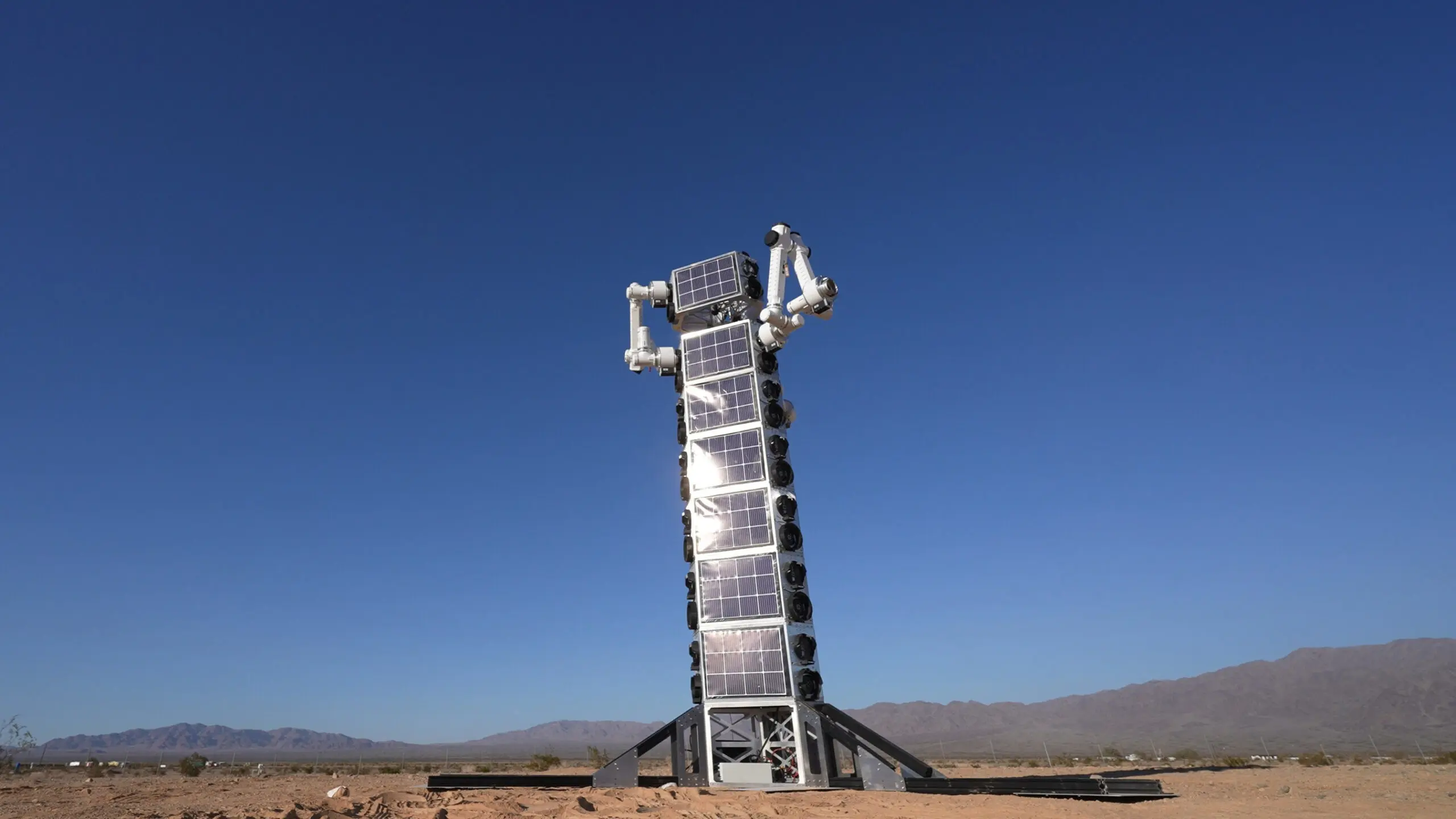Test and Measurement: Robots build a five-meter comms tower

Well, this is wild: In a scenario meant to mimic the lunar surface, four robots cooperatively built a five-meter communications tower, including antenna—and then disassembled it, simulating not only the construction of such a structure but maintenance and sustainable operations for lunar infrastructure development.
Robotics company Gitai’s Lunar Rover and three of its “Inchworm” robots achieved the build, which the company called “groundbreaking” and a first of its kind. Japanese operator KDDI was also a partner on the project, providing specifications and information about their mobile phone base stations that allowed Gitai to develop an antenna suited for robotic construction. Gitai’s robotics were selected late last year to be part of the Defense Advanced Research Projects Agency (DARPA)’s 10-Year Lunar Architecture capability study.
The demonstration took place in a desert meant to stand in for the lunar surface. The robots constructed the modular tower and then connected the antenna to the tower top, and also connected power cables that were confirmed to have successfully electrified the antenna. The same robots then disconnected the antenna and disassembled the tower.
Watch an accelerated video of the robotic construction and de-construction:
In other test news:
-The biggest T&M story of the week is definitely the news that Viavi Solutions is in the process of acquiring Spirent Communications for $1.3 billion. Read RCR’s coverage here.
–Keysight Technologies and ETS-Lindgren partnered on a joint solution that they say is the first over-the-air test Non-Terrestrial Networks test solution for narrowband IoT. That offering enables the measurement and validation of transmitter/receiver performance of NB-NTN devices, the companies said, which will “allow device manufacturers to assess real-life performance to ensure they meet consumer expectations and the requirements of network operators and regulators.” The test solution will also support CTIA OTA test requirements for NTN devices, which are still in the works.
Keysight also said recently that it was chosen as the test partner for Deutsche Telekom’s early adopter program for satellite-based NTN and will be providing an end-to-end NB-NTN testbed.
–Rohde & Schwarz has boosted the frequency range of its FSPN50 phase noise analyzer and VCO tester up to 50 GHz from a previous maximum of 26.5 GHz.
-Fiberoptic test equipment manufacturer Bola Technologies has debuted a new Dynamic Optical Filter Array (DOFA) platform, which is available through its distrbutor OgMentum and will be highlighted at OFC 2024 later this month. Bola says that the platform offers a “more cost-effective, flexible and higher performing alternative to competing solutions.”
-Speaking of OFC, Viavi Solutions will be showcasing artificial intelligence infrastructure-related testing and the impacts of AI on optical infrastructure at the conference.
“AI and ML accelerate the adoption of new technologies, including ultra-low-latency applications requiring high-speed and high-capacity data transmission. To address these intensive memory and processing needs, data center operators need to dramatically increase the amount of fiber interconnects and new multi-fiber connectivity,” said Kevin Oliver, SVP of fiber and access solutions at Viavi Solutions. Tom Fawcett, SVP and GGM of lab and production at Viavi, commented that “Traditional networking infrastructure struggles to keep pace with the performance, speed and capacity requirements of AI applications. To address this challenge, there has been a push towards higher-speed 800G optical transceivers with a dynamic pipeline of optical innovations behind it.” Which then leads to the need to be able to test 800G and related features.

Comments are closed.